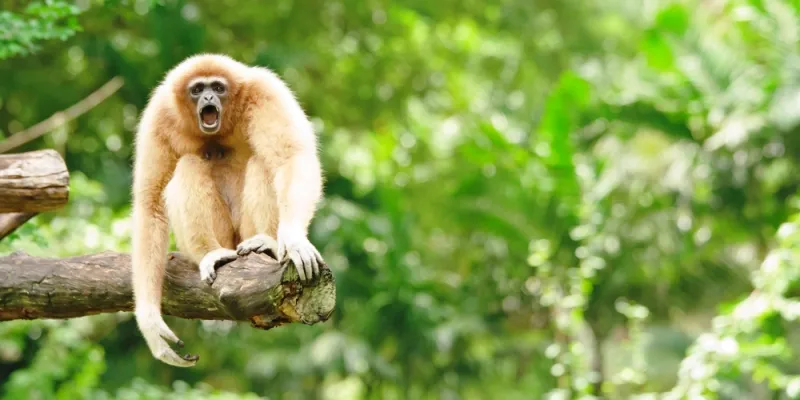Arunachal launches programme on conservation of the endangered Eastern Hoolock Gibbon
A community and school based education programme on conservation of the endangered Eastern Hoolock Gibbon has been launched in Arunachal’s Lower Dibang Valley district in the state and at Sadiya sub-division under Assam’s Tinsukia district. The programme, launched yesterday, by Arunachal Pradesh Principal Chief Conservator of Forest (PCCF) Dr Shashi Kumar, would be implemented by ENVIRON, North East based NGO, an official communique informed in Itanagar.

Supported by US Fish and Wildlife Service, the project would be implemented in partnership with state’s Environment and Forest department with Aitijya (The Heritage) as partner. Rajiv Gandhi University’s Zoology department and G B Pant Institute of Himalayan Environment and Development (GBPIHED), NE Unit would provide all technical support, the communiqu informed. The launch also celebrated the fifth day of the Wildlife Week.
Project principal investigator Dr Kuladip Sarma gave a comprehensive overview followed by technical sessions to review the present conservation status of the Eastern Hoolock Gibbon in Arunachal Pradesh – Assam landscape. Wildlife Trust of India veterinarian Dr Zahan Ahmed and Itanagar Biological Park spoke on “Translocation of Gibbons and conservation issues” and “Conservation breeding & habitat management of Gibbon” respectively.
ENVIRON is a society for conservation and management of nature and natural resources in NE India. Its wildlife and biodiversity conservation division head Kripal Mazumdar, in his address, lauded US Fish and Wildlife Service and other organizations for their support. Several suggestions for in-situ and ex-situ measures were given for conservation.
The project, to pilot a conservation education module in schools through trained teachers and among community through the local youth volunteers, would foster and facilitate dialogue between key stakeholders, local community, youth groups, district administration (local block officials), forest officials and various civil society organizations, the communiqu added.
Image Credit: Shutterstock
Read More:
Wildlife crime and trade is under-reported and under-played
Odisha’s Bhitarkanika national park may join world heritage site list
Ganga river dolphin, India’s national aquatic animal, to undergo first ever unified survey







